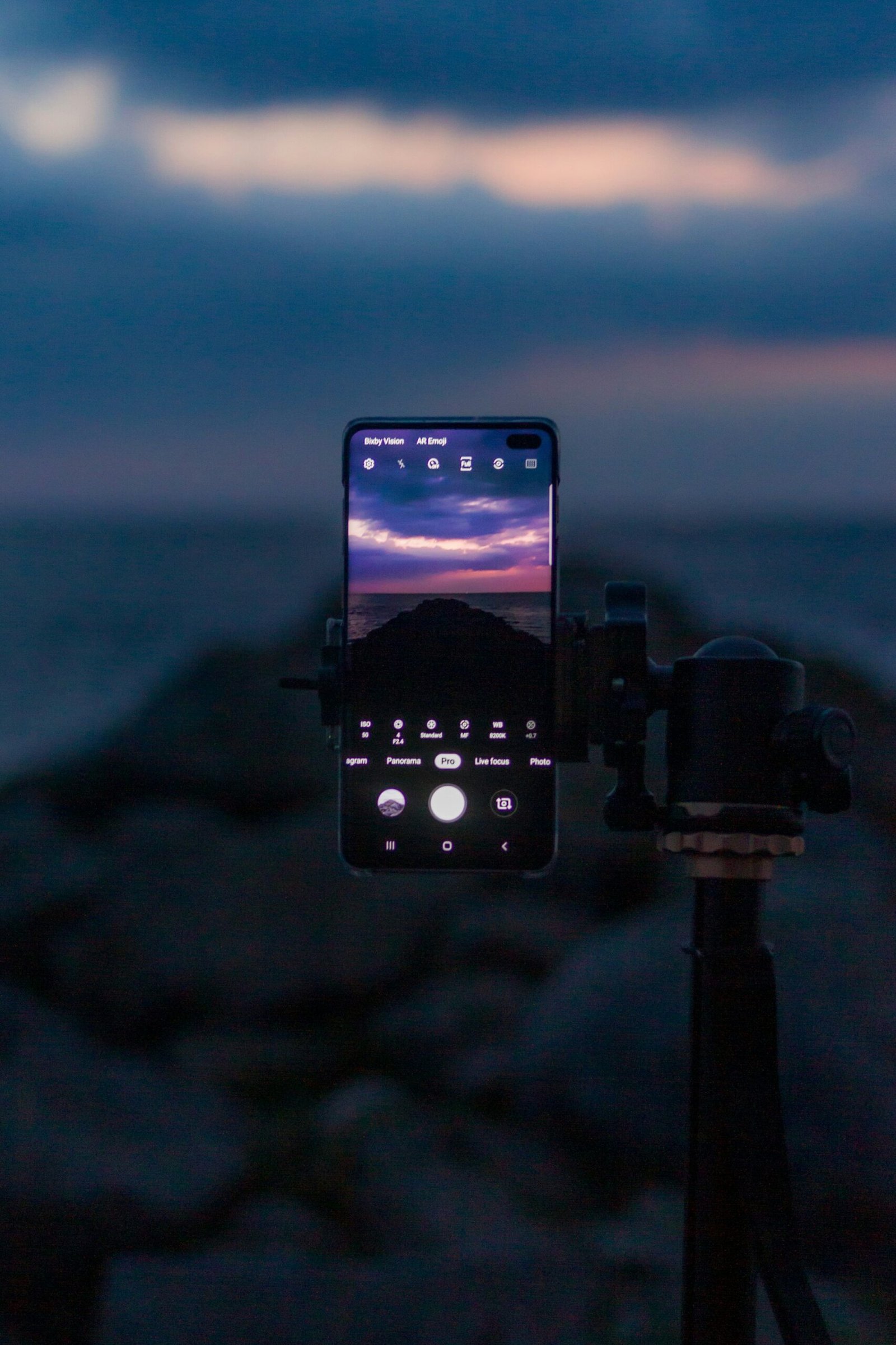Don't miss our holiday offer - 20% OFF!
Best Fine Art Photographers You Need to Know
Introduction to Fine Art Photography
Fine art photography is a genre that transcends traditional boundaries, merging the realms of art and photography. Distinguished by its emphasis on aesthetics, concepts, and emotions, fine art photography stands apart from other types of photography, often serving as a medium for the photographer’s creative and personal expression. This form of photography is not merely about capturing an image; it is about conveying a deeper message, evoking feelings, and engaging the viewer on a profound level.
One of the unique characteristics of fine art photography is its focus on the artist’s vision. While other photographic styles might prioritize subject matter, technical precision, or documentary accuracy, fine art photography prioritizes artistic interpretation. Each photograph is meticulously crafted to reflect a concept or emotion, often incorporating elements of composition, lighting, and symbolism to transcend the ordinary and approach the sublime.
In the broader context of art history, fine art photography holds a significant position. It evolved as a distinct art form in the late 19th and early 20th centuries, coinciding with the rise of modernism. Pioneers like Alfred Stieglitz and Ansel Adams have elevated photography from a mere mechanical process to a respected artistic discipline, comparable to painting and sculpture. Their contributions paved the way for contemporary fine art photographers who continue to push the boundaries of the medium, experimenting with both traditional and digital techniques to express their unique visions.
Contemporary fine art photography continues to influence and shape the world of visual arts. As digital technology and social media platforms expand the reach of photographers, the impact and relevance of fine art photography grow, offering new avenues for creative expression and audience engagement. It plays a crucial role in contemporary art, challenging perceptions, and encouraging viewers to see the world through different lenses.
Ansel Adams: Master of Landscape
Ansel Adams is internationally celebrated for his unparalleled contributions to landscape photography, effectively capturing the vast, unspoiled beauty of the American wilderness. Born in 1902 in San Francisco, Adams developed a profound appreciation for nature from a young age. His early experiences in Yosemite National Park deeply influenced his artistic direction, becoming the cornerstone for his life’s work in nature photography.
Adams is renowned for his technical prowess and innovative photographic techniques. He was a pioneer of the “Zone System,” a method he co-developed to control and manipulate the photographic exposure and ensure the optimal translation of light and shadow on film. This meticulous approach allowed Adams to achieve stunning clarity and tonal range in his images, rendering breathtaking landscapes with a degree of detail and depth previously unattained.
Among his most famous works is the iconic “Moonrise, Hernandez, New Mexico,” a photograph that perfectly encapsulates his mastery of composition and atmospheric mood. Captured in 1941, this image is often hailed as a timeless masterpiece in landscape photography, admired for its dramatic interplay of light and shadow and its hauntingly serene quality.
Beyond his technical contributions, Adams played a vital role in advocating for the conservation of American wilderness through his art. He was a dedicated environmentalist whose evocative images of national parks like Yosemite and Yellowstone were instrumental in raising public awareness and fostering a deeper appreciation for America’s natural landscapes. His work was often intertwined with his advocacy, seamlessly blending artistry with activism.
Adams’ influence on modern landscape photography remains profound. His meticulous techniques and environmental advocacy continue to inspire contemporary photographers, prompting a balance of artistic pursuit and ecological mindfulness. His legacy endures, both in the stunning images he left behind and in the ongoing efforts to preserve the natural wonders he so passionately captured.
Cindy Sherman: The Art of Self-Portraiture
Cindy Sherman stands as a luminary in the realm of fine art photography, chiefly recognized for her groundbreaking approach to self-portraiture. Through the innovative use of costumes, makeup, and meticulously crafted settings, Sherman effectively transcends traditional boundaries of identity formation and representation. Her oeuvre is a profound exploration into themes of identity, femininity, and societal roles of women, making her a pivotal figure in the fine art community.
One of Sherman’s most acclaimed works is the series ‘Untitled Film Stills’, created between 1977 and 1980. In these black-and-white photographs, she emulates and subverts archetypal images of women in 1950s and 60s cinema. These images are hauntingly familiar yet entirely fictional, offering a critique of the stereotypical roles that women have been historically cast into by society and the media. Sherman’s adept manipulation of her own appearance to embody diverse personas underscores the fluidity of identity and the constructed nature of femininity.
Moreover, Sherman’s work extends beyond ‘Untitled Film Stills’ into equally compelling series, such as ‘Centerfolds’, where she adopts provocative poses mimicking the style of men’s magazine centerfolds, yet infused with a stark, unsettling quality that challenges the viewer’s perception. By altering her own visage and employing varying scenarios, Sherman poses critical questions about the representation and perception of women.
Sherman’s impact on contemporary photography and feminist art cannot be overstated. Her work has not only broadened the scope of photographic art but has also significantly contributed to discussions on gender and identity in the modern era. By transforming herself into a variety of characters that question stereotypes and societal norms, Sherman exemplifies the capacity of self-portraiture to serve as a potent tool for social commentary.
In examining Cindy Sherman’s extensive body of work, it becomes clear how her artistic endeavors have reshaped our understanding of both self-portraiture and the broader cultural narratives surrounding femininity and identity.
Andreas Gursky: Grandeur in Detail
Andreas Gursky is a prominent figure in contemporary photography, renowned for his masterful large-scale images that capture the intricacies of urban landscapes and interior spaces. His works are a complex blend of reality and digital enhancement, reflecting the interconnectedness of the global environment he so meticulously documents. Gursky’s approach allows viewers to engage with the minute details of his subjects, providing a unique perspective on modern life’s grandeur.
One of Gursky’s most iconic works, ’99 Cent’, encapsulates his technique of layering multiple images to create a single, expansive photograph. This piece, depicting the inside of a discount store filled with colorful merchandise, challenges the viewer’s perception of consumerism and globalization. The vivid, almost overwhelming detail in ’99 Cent’ demonstrates Gursky’s ability to elevate mundane scenes into visually arresting art pieces.
Another significant piece, ‘Rhine II’, holds the record for the most expensive photograph ever sold at auction. This minimalist depiction of the Rhine River, characterized by its serene bands of color and meticulous composition, exemplifies Gursky’s skill in transforming the ordinary into the extraordinary. Through digital alterations, he removed modern intrusions from the scene, presenting an abstract yet harmonious vision of nature.
Gursky’s work consistently pushes the boundaries of contemporary photography. His focus on detail, whether through meticulous composition or digital manipulation, offers new ways to perceive the world around us. By elevating everyday scenes through his distinctive, hyper-detailed style, Andreas Gursky’s photographs not only capture moments in time but also provoke thought about the complexities of modern existence. His significant contributions to the art market and the field of fine art photography underscore his importance as an artist whose visionary approach redefines visual storytelling.
Sally Mann: Intimate and Controversial
Sally Mann’s oeuvre is characterized by its deep intimacy and, often, its capacity to stir controversy. Her work delves into personal themes with raw authenticity, shedding light on family, memory, and mortality. Most notably, her series “Immediate Family” places her children at the center, exploring their childhood against the backdrop of rural Virginia. This series, however, has not been without its detractors; some argue that the candid nature of these images, which sometimes feature her children in states of undress, crosses ethical boundaries.
The public response to Mann’s work has been polarizing. While many laud her for her honest and unflinching portrayal of familial bonds and the passage of time, others express discomfort with the level of exposure given to her subjects, her children. Those in support of Mann argue that her work celebrates the innocence and transient nature of childhood. Her use of large format cameras and gelatin silver prints further deepens the timelessness of these moments, invoking a sense of nostalgia and universality.
The ethical implications of Mann’s photographs cannot be ignored. Critics question whether her children, as subjects, could give informed consent and understand the enduring legacy of their portrayal. Conversely, Mann has defended her work by emphasizing the artistic and documentary value it holds. Through her lens, she encapsulates the essence of human existence, capturing fleeting moments that embody the broader human experience.
Mann’s photographs challenge societal norms and provoke thought, encouraging viewers to confront their own definitions of privacy, childhood, and artistry. Her work invites a dialog on how personal and shared memories are preserved and interpreted through the medium of fine art photography. The controversy surrounding her images underscores the powerful role of photography in shaping cultural discourse and extending the boundaries of artistic expression.
Irving Penn: Master of Composition
Irving Penn stands as a paragon in the realm of fine art photography, celebrated for his exceptional mastery of composition and lighting. Penn’s career, which spanned over six decades, encapsulated a diverse array of subjects ranging from fashion photography and portraiture to intricate still life compositions. His innovative use of background and form revolutionized these genres, bringing a unique blend of simplicity and sophistication to each frame.
Penn’s contributions to fashion photography are particularly noteworthy. As a long-time collaborator with Vogue magazine, he crafted innumerable iconic images that remain integral to the publication’s visual legacy. His fashion photographs are distinguishable by their stark backgrounds and meticulous arrangement, allowing the subject to command complete attention. Likewise, his portraiture is characterized by its ability to capture the essence of the sitter, whether they were celebrities, artists, or ordinary people from diverse cultures around the globe. One of his most famous series, “Small Trades,” portrays workers in their professional attire against neutral backdrops, emphasizing the dignity and individuality of each person.
In his still life work, Penn’s approach was equally groundbreaking. He often utilized unconventional materials and arrangements, creating visual narratives that were simultaneously meticulous and abstract. His “Cigarettes” series, which photographed discarded cigarette butts in stark close-up, challenged the traditional notions of beauty and decay, making an indelible impression on the art world.
Some of Penn’s notable works include his portraits of iconic figures like Audrey Hepburn and Pablo Picasso, as well as his artistic explorations in “Worlds in a Small Room.” The influence of his innovative techniques and eye for detail extends beyond fine art photography, leaving a lasting impact on commercial photography as well. Penn’s legacy is evident in the countless photographers who continue to draw inspiration from his visionary approach to composition and lighting.
Nan Goldin: Documenting Life’s Raw Moments
Nan Goldin stands as a pioneering figure in fine art photography, renowned for her unfiltered portrayal of life. Her seminal work, “The Ballad of Sexual Dependency,” encapsulates a narrative brimming with vulnerability, documenting the intricacies of her relationships, addiction, and the vivid realities of the LGBTQ+ community during the late 20th century. Goldin’s photography presents an unapologetic voyeurism, capturing raw and intimate moments that traditional photography often shuns.
The power of Goldin’s work lies in its visceral realism. Her images, often suffused with the emotional and physical scars of her subjects, challenge viewers to confront the complexities of human existence. Each photograph in “The Ballad of Sexual Dependency” serves as a snapshot of the gritty and sometimes harrowing experiences of love, loss, and dependency. This series defies conventional aesthetic norms, trading polished compositions for stark authenticity.
Goldin’s photographic journey began within her inner circle, bearing witness to the lives of friends as they navigated the turmoil and tenderness of their realities. This personal connection permeates her work, making each image not just a document, but a poignant piece of lived history. The intimacy and honesty in her photographs highlight the power of the medium as a tool for both social commentary and personal expression.
Through her lens, Goldin elevates the everyday struggles and triumphs of marginalized communities, bringing them into mainstream consciousness. Her contributions have significantly influenced the trajectory of fine art photography, proving that the art form can be both deeply personal and universally resonant. By chronicling authentic moments, she invites viewers to partake in a shared human experience, prompting reflection and empathy.
In essence, Nan Goldin’s work exemplifies the potent blend of personal narrative and social critique. Her fearless documentation of life’s raw moments not only redefined the boundaries of fine art photography but also showcased the enduring impact of the medium in capturing the essence of human emotion and societal issues.
Emerging Fine Art Photographers to Watch
In the ever-evolving realm of fine art photography, several emerging photographers are making significant waves, each bringing unique perspectives and innovative techniques to the art form. Noteworthy among these rising stars is Tyler Mitchell, who gained international acclaim as the first African American to shoot a cover for Vogue. Mitchell’s breathtaking blend of fashion and cultural commentary transcends conventional portraiture, offering intimate and profound reflections on identity and belonging. His work, characterized by vibrant color palettes and serene compositions, has been featured in numerous exhibitions, underlining the importance of inclusivity and representation in contemporary art.
LaToya Ruby Frazier is another influential name in the emerging fine art photography scene. Her poignant and deeply personal documentary photography explores themes of race, family, and the impact of industrial decline on communities. Frazier’s series, such as “The Notion of Family,” critically examines economic and environmental issues through an intimate lens, providing a visceral sense of place and history. Her work has been showcased in major exhibitions, asserting her voice as integral in dialogues concerning social justice and resilience.
Brooke Shaden stands out with her imaginative approach to self-portraiture and conceptual photography. Blurring the lines between reality and fantasy, Shaden creates ethereal and otherworldly images that delve into the human psyche and existential themes. Her innovative techniques and narrative-driven visuals have garnered a substantial following, and her exhibitions often leave a lasting impression on viewers, inviting them to explore the depths of imagination and self-discovery.
These emerging fine art photographers, through their unique styles and compelling subject matter, are pushing the boundaries of traditional photography. Their work not only enriches the contemporary art scene but also provokes critical thought and dialogue on pressing societal issues. By embracing diversity and innovation, Tyler Mitchell, LaToya Ruby Frazier, and Brooke Shaden are undoubtedly shaping the future of fine art photography.


